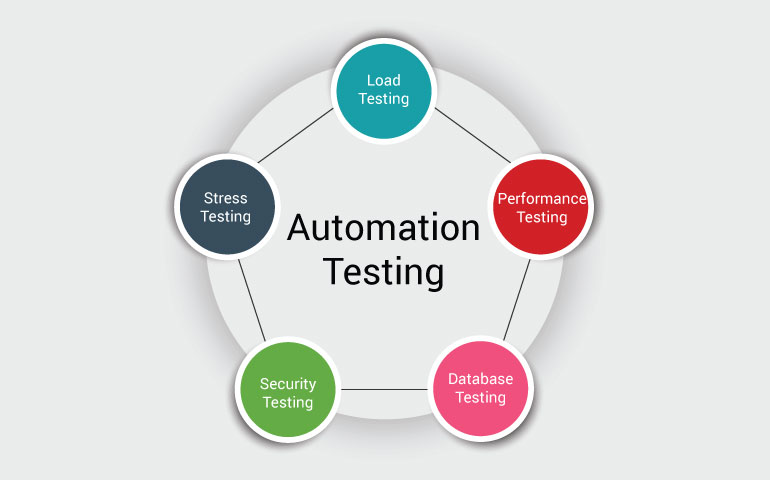From Guidebook to Automated Testing: A Comprehensive Guide to Transitioning Efficiently and Properly
In the realm of software program screening, the change from handbook to automated processes has actually ended up being an increasingly crucial transition for organizations seeking to improve performance and accuracy in their screening techniques. As technology continues to advance, the requirement for seamless and efficient automatic screening approaches has never ever been much more important. The journey from manual to automated screening is not without its obstacles, yet when approached strategically and with a clear strategy in mind, the advantages can be significant - automation testing. In this detailed overview, we will explore crucial steps and considerations necessary for an effective transition, from the first selection of tools to the combination of automation into existing operations. Remain tuned to reveal the insights that will certainly assist lead the means for a smoother and more reliable testing procedure.
Benefits of Automated Evaluating
Automated testing provides countless advantages, enhancing efficiency and precision in software advancement processes. One main benefit is the significant decrease in testing time. Automated examinations can be run concurrently on several gadgets and running systems, dramatically quickening the screening stage compared to hand-operated screening. This raised effectiveness enables faster comments on the high quality of the software application, allowing designers to determine and resolve issues immediately.
Moreover, automated screening guarantees a greater level of precision in discovering flaws. Given that automated examinations comply with predefined manuscripts, human error is minimized, bring about more trusted examination outcomes. Consistency in testing is also boosted, as automated examinations perform the same actions precisely each time they are run. This uniformity is important in guaranteeing that all performances of the software program are completely evaluated, decreasing the likelihood of undetected pests sliding with to manufacturing.
Picking the Right Devices

Firstly, examine your requirements and goals. Recognize the extent of your task, the innovations included, and the capability of your team. This evaluation will certainly aid you determine the functions and abilities you call for in your testing tools.
Second of all, think about the compatibility of the tools with your existing systems and processes. Smooth integration with your existing software application development lifecycle is important to guarantee a smooth change to automation.
In addition, examine the scalability and adaptability of the tools. As your screening needs evolve, the tools need to have the ability to adapt and fit changes effectively.
Lastly, element in the assistance and area around the devices. Durable assistance and an energetic customer community can offer beneficial resources and assistance when executing automated screening. By thoroughly taking into consideration these elements, you can choose the right devices that align with your needs and established the stage for a successful transition to automated testing.
Creating Reliable Test Manuscripts

When crafting examination manuscripts, it is essential to take into consideration the details demands of the software being checked and ensure that the manuscripts attend to all important functionalities. Clear and detailed calling conventions for test manuscripts and examination cases can boost readability and maintainability. Additionally, including mistake handling systems within the examination manuscripts can help in identifying and attending to issues immediately.
Moreover, organizing examination manuscripts right into modular components can boost reusability and scalability, decreasing redundancy and boosting performance in examination script upkeep. Normal reviews and updates to examine scripts are essential to maintain pace with developing software program demands and capabilities. By adhering to these principles, testers can produce durable and reliable examination scripts that contribute significantly to the success of automated testing processes.
Integrating Automation Into Workflows
Reliable assimilation of automation devices into existing operations simplifies procedures and improves productivity within software program growth cycles. When integrating automation right into operations, it is crucial to determine repetitive tasks that can be automated to conserve time and lower human mistake. By perfectly incorporating automated testing devices like Selenium or Appium into the software advancement lifecycle, teams can achieve faster responses on code modifications, bring about quicker bug discovery and resolution. This assimilation permits for constant screening throughout the development procedure, ensuring that any kind of problems are identified at an early stage, leading to higher software top quality. Furthermore, automation can be utilized to cause tests instantly after each code commit, offering prompt validation and maximizing testers to concentrate on more complicated circumstances. Appropriate integration of automation tools calls for partnership between growth, testing, and operations teams to establish a unified workflow that enhances effectiveness and performance in supplying top home notch software.
Making Certain a Smooth Shift
Efficiently transitioning to automated testing includes precise preparation and mindful implementation to make best use of and lessen disruptions effectiveness in the software growth procedure - automation testing. To make sure a smooth change, it is necessary to begin by performing a comprehensive evaluation of the existing testing processes and recognizing locations where automation can bring one of the most significant benefits. Engaging with all stakeholders early at the same time, consisting of designers, testers, and job managers, is important for gathering support and buy-in for the automation effort
Interaction is vital throughout this shift stage. Clear communication of the goals, benefits, and expectations of automated screening helps to handle any kind of resistance or problems that might arise. In addition, giving appropriate training and resources for staff member to upskill in automation devices and methods is important for ensuring a successful change.

Conclusion
In conclusion, transitioning from guidebook to automated screening uses numerous advantages, including boosted effectiveness and dependability. By selecting the proper tools, composing efficient examination manuscripts, and incorporating automation effortlessly right into process, companies can make sure a smooth and effective shift. It is necessary to welcome automation as a useful property in software application screening processes to enhance general high quality and efficiency.
In the realm of software screening, the shift from manual to automated processes has actually come to be a significantly crucial transition for organizations seeking to enhance performance and precision in their testing practices. Automated tests can be run all at once on several devices and operating systems, drastically speeding up the testing stage contrasted to hands-on testing. Uniformity in screening is additionally enhanced, as automated tests carry out the same steps exactly each time they are run.To make sure the successful application of selected screening devices, the development of effective examination scripts plays a crucial duty in verifying the performance and efficiency of automated procedures - automation testing. By adhering to these principles, testers can produce robust and efficient test manuscripts that add considerably to the success of automated testing procedures
Comments on “Automation Testing Frameworks: Streamlining Complicated Testing Circumstances”